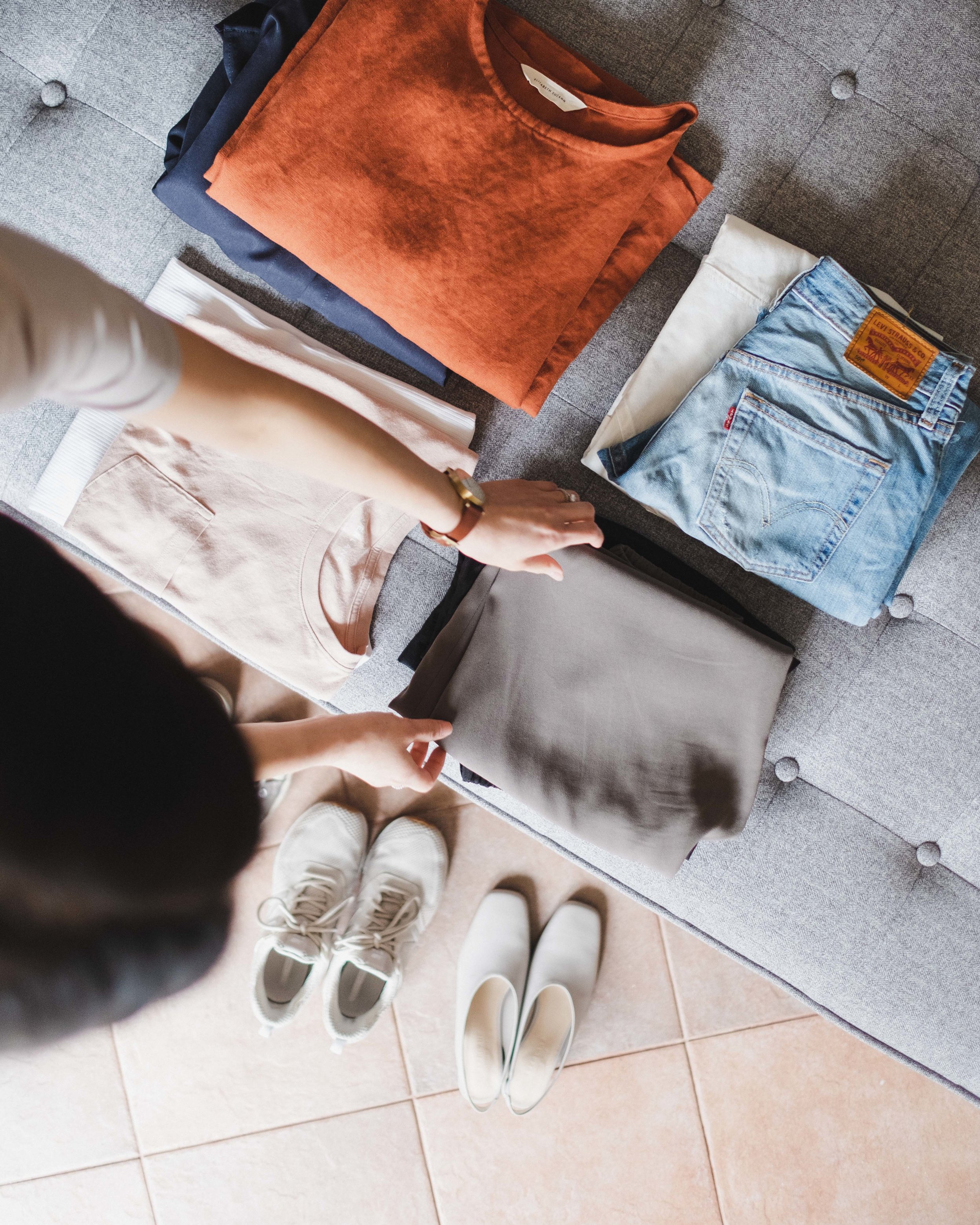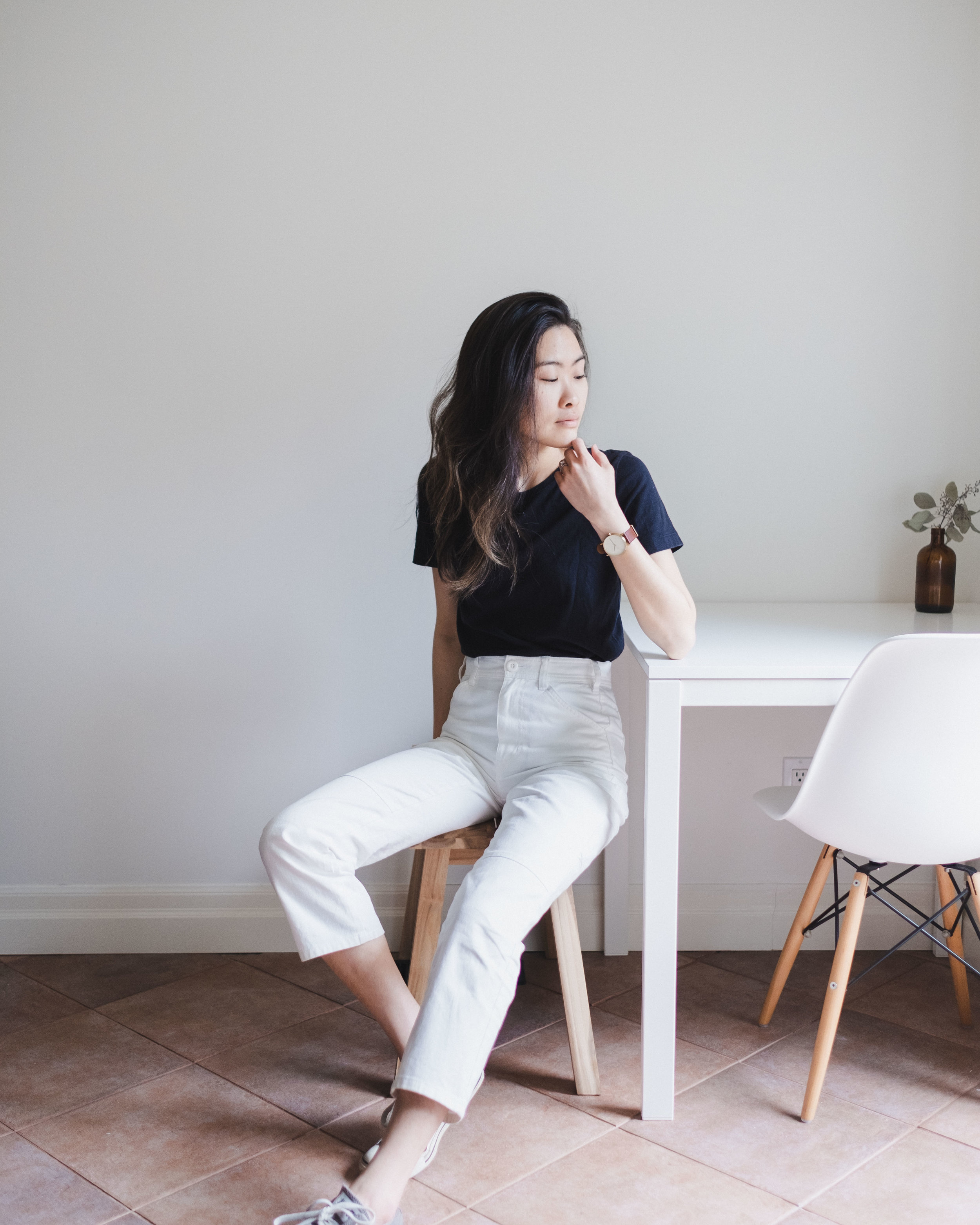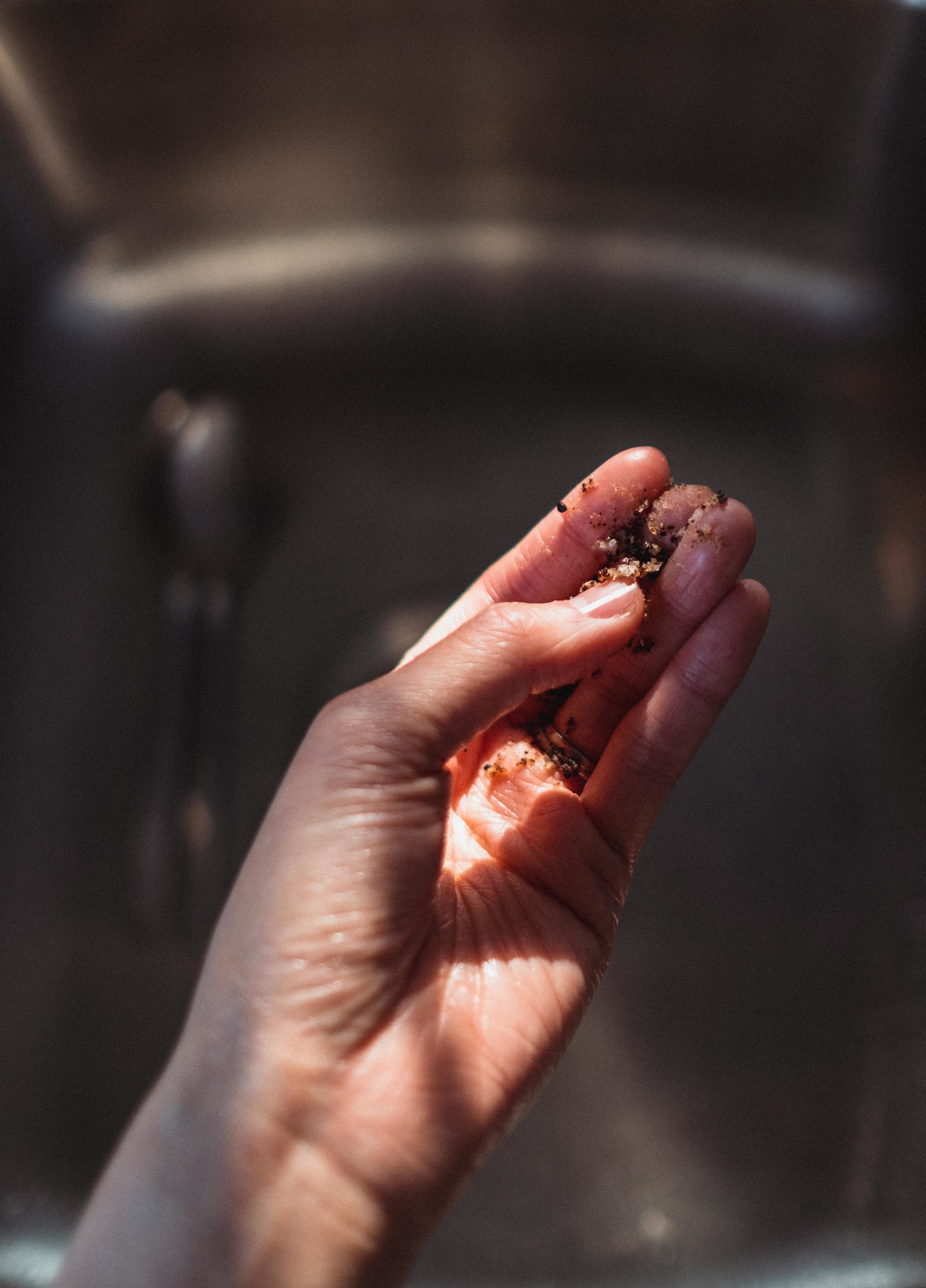how to:
capsule wardrobe 101
Capsule wardrobes have been all the rage for the past few years now. Although I think they have navigated away from the original, more traditional definition of a strict number of classic, high-quality, versatile pieces, I still love the idea of capsule wardrobes and thought I’d give you my take on how to build your own capsule wardrobe. It’s definitely not the original method or the only method to build a capsule, but I hope this gives you some starting points or some ideas to tackle capsule wardrobes your own way.
But first, let’s talk about the why.
I think it’s important to consider why you want to have a capsule wardrobe before you start, or else this whole process might only be something that lasts for a few weeks, or maybe a few months. Here are a few pros and cons to consider when starting a capsule wardrobe. Maybe the following are some reasons that piqued your interest in the first place. Ultimately, we want to build a capsule wardrobe that features your favourite styles and is functional and practical for your lifestyle so that it becomes a sustainable process.
Pros:
budget friendly
great for small closets
can be more environmentally friendly
longer lasting
easier to get ready
bonus: may help you discover your personal style!
Cons/Challenges:
style/trend constricting
possibility of being less environmentally friendly (will discuss this point below)
seasonal constrictions
Considerations…
Consider your lifestyle
Before gathering pieces for your capsule wardrobe, it’s important to know which pieces are best suited for your lifestyle. For example, I used to work in a more corporate setting, so pieces like trousers, shirts, and blazers made a lot more sense than they do now in my more casual work setting. Maybe you’re a new mum or a student. These things all affect what we choose to wear each day and what pieces we incorporate into our capsule wardrobes.
Consider your environment
Another factor that I personally found affected my capsule a lot is weather. After moving back to Canada from Sydney, I’ve found that I need a few more pieces than I did living in a warmer climate to get me through all four crazy Toronto-weather seasons. If I lived in a purely warm, sunny place, I might need fewer pieces in my capsule. So all that to say, consider your environment, and where you live when creating your capsule.
A system that works for me is having a basic, year-round core capsule that consists of pieces that are worn all seasons. Then on top of that I have a seasonal capsule for fall/winter and then one for spring/summer where I can have a bit more fun and change things up each season and include pieces that I wouldn’t necessarily wear all year round. You can read more on my core capsule here. Keep in mind, that I’m quite flexible with my wardrobe and I sometimes swap pieces from my seasonal and core capsules because I’m still figuring out which pieces I actually wear through all seasons.
Consider your personal style
What do you personally love to wear? If there are pieces you often gravitate toward, these will most likely be your capsule wardrobe staples. If you’ve been following my sustainable style journey for a while now, you’ll probably know that turtlenecks and high waisted pants are my jam. I go to these items time and time again for reasons such as comfort, practicality, and function. Take a look through your current wardrobe, I’m sure you can pick out some tried and true pieces as your capsule foundation.
Go easy on yourself!
I know traditionally, capsules are about numbers and having a certain number of pieces in your wardrobe. However, I personally think it’s fine for each individual to have a set a number or range for themselves, according to the factors that I mentioned above. In the end I’ve learned, through this process, to be intentional with my budget and what pieces I choose to invest into. It has also taught me that I need less than I think I do. I’ve also learned more about my personal style and it has invited more creativity into my wardrobe by learning to experiment with different ways to style pieces.
Let’s get started! (finally)
Wardrobe Evaluation
First, evaluate what you already own! This is SO SO important to being sustainable through this whole process. The point of a capsule is to curate a wardrobe that you love and can easily style each day that fits your lifestyle. I’m sure there are at least a few things in your wardrobe that you love to wear. So pick out a few dearly loved pieces and make sure you include those in your capsule! If there are pieces you no longer wear or are ill-fitting, declutter it sustainably! Try to repurpose the item or fabric (Tip: old t-shirts make GREAT cleaning rags). Sell it through online platforms such as BUNZ, Poshmark, or ThredUp. Donate it or gift it to someone else who loves it and would want to give it a second life.
Gather Inspiration
Next, gather style inspiration! This is such a fun part for me. I’m always so inspired by others’ style and I love to create mood boards each season on Pinterest. This not only keeps me from impulse purchases, but it also shows how my style changes from season to season - it’s like a digital style diary. I also love the “save” function on Instagram which I use often as I’m scrolling, to save inspiring outfits and styling techniques.
List It Out
Now that you’ve gathered pieces from your existing wardrobe and hunted for style inspo. It’s now time to identify wardrobe “gaps” or maybe some “wants”. Maybe there’s a particular trend that you love this season and you want to include - write it down! Maybe you’ve been on the hunt for high quality high waisted denim for a long time. Write it down! For example, this spring/summer season, I was on the lookout for some white pants and more “summer” material pieces for my capsule. Whatever wardrobe gaps you identify, make a list! Having a list in mind helps to guide your shopping so that you will be less likely to make an impulse purchase. It’s like going to the grocery store with a list rather than going to the grocery store with no list and an empty stomach!
Cape Jumpsuit (Top) by Vetta Capsule
Donna Jeans by Cheap Monday
Black Tee by Muji
The Carpenter Pant by Everlane
Shop Intentionally
Finally, it’s time to shop for those missing items. Start to keep an eye out for the items you’ve identified on your list and shop with intention. You may be wondering, “what does shopping intentionally even mean?”. That is a great question because honestly, I think shopping intentionally can mean different things to different people, depending on your WHY (see above). I can only speak for my own why, so here’s my story and how I define “shopping intentionally”. I originally began exploring capsule wardrobes because of my interest in living a more low waste life. This exploration very quickly led me to the nasty discovery of how wasteful and unethical the fast fashion industry is and this has really affected how I shop. For me, shopping intentionally means being aware of my ecological footprint by shopping sustainably and also supporting ethically-made brands where I can. As tempting as it would be to start from zero, and build my wardrobe from the ground up, I would end up leaving an even larger environmental footprint by throwing out all my existing clothing. Instead, I try to “shop my closet” as much as I can but still give myself the freedom to enjoy fashion by making purchases from ethical and sustainable companies and investing in high quality pieces that I know will get a lot of wear.
If you don’t know where to look for sustainable and ethical brands, I have a whole brand directory where I’ve been keeping track of all the brands I’ve tried or have collaborated with in the past.
Now what?
Well, if you stuck around all the way to the end, thank you so much - I really appreciate it! I hope this post was insightful and helpful if you’re looking to build your own capsule wardrobe or are just curious about all this capsule talk. It may seem a little complicated at first, but trust me, you’ll get the hang of it! I’m going to leave a few more tips below that you guys shared with me through my latest #capsuleconversations post, and hopefully they will help someone out!
Tips from you!
try smaller capsule challenges as a start to see if the capsule wardrobe system is for you (spring 10x10, may 30x30)
have a visual overview for your capsule wardrobe
choose pieces based on fabrics
have a “capsule” when travelling to test out the system
make sure your pieces can be styled at least 3 ways before purchasing
have fewer pieces that are patterned for simpler styling
Let’s continue the conversation below! Please let me know if you have any other questions or things I should blog about. It was already so hard to cap this post…I’m thinking there may need to be a part 2!
Do you have a capsule wardrobe? I’d love to hear your thoughts!
This post is not sponsored but contains some gifted items and affiliate links. If you decide to shop through the links above, I make a small commission that helps support this blog. I only share products and brands I love and support. All opinions are my own. Thank you for supporting Candice Tay!










